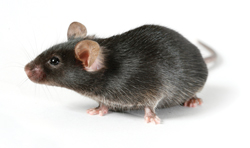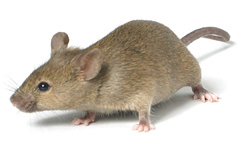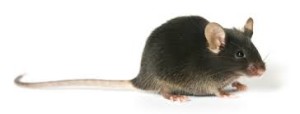The C57 Story: Why you are the way you are
Science has a lot to learn about sugar sensitivity. We can’t just go to PubMEd, put ‘sugar sensitivity’ in the search field and find hundreds or thousands of citations telling us all about our unique bodies and behaviors. But the story is there in the science writings, encoded in unexpected places and in unexpected ways. If we listen and watch our own stories, we can go back to the literature and better understand the whys of what we are living.
The Power of the Beta Endorphin Story
I continue to be intrigued by beta-endorphin and its relationship to the story of sugar sensitivity. I began my relationship with beta-endorphin when I learned two intriguing themes. The first came from the work of Dr.
Christine Gianoulakis at McGill University. She noticed that two different strains of mice responded to the effects of alcohol in very different ways. The C57GL/6 mice had a far more potent reaction than their “dry”
brothers and sisters, the DBA/2 mice. Because of this intensity of the response, they really go for the booze. C57s are called alcohol-preferring mice and DBAs are called alcohol-avoiding mice.Many other studies have shown that not only do the C57s have a high preference for alcohol, they also love sweet things. In fact, some scientists are working with the concept that a preference for sweet may be an indicator of a risk for alcoholism.
Dr. Gianoulakis and her colleagues have worked with these mice for a long time. They discovered that the C57’s and the DBA have very different levels of beta-endorphin. The C57’s are born with much lower levels of beta endorphin in their brains, so their brains increase the number of receptor sites to try to catch more of the beta endorphin molecules. This is called upregulation. Because they have more places to catch the beta-endorphin, they get a bigger response to things that evoke beta-endorphin.
At Risk For Alcoholism.
Dr. Gianoulakis extended her study to people and examined a whole group of people who are known to be genetically predisposed to alcohol addiction, the children and grandchildren of alcoholics. Children and grandchildren of alcoholics seem to be the human equivalent of the C57 mice. They, like the mice, have lowered levels of beta-endorphin and a heightened response to things that evoke beta-endorphin like alcohol and sugars.
As Dr. Gianoulakis was publishing her work, a number of other scientists were noticing that sucrose quieted pain. They discovered that not only does sucrose quiet physical pain, but also it quiets the pain of loss or social isolation. When a group of baby chicks were taken from their mama, they peeped and peeped. When they were given sugar water, they stopped crying for mama chicken.
Sugar as a Drug
Dr. Elliott Blass, then at Cornell, wanted to understand how this happens. How could sugar act like a drug?
He did some experiments and showed that sucrose cut physical and emotional pain by evoking the brain’s own beta-endorphin. Beta-endorphin is the body’s natural painkiller. It is called an endogenous opioid or internal painkiller. Morphine and heroine are opiate drugs, which mean they go and sit in the brain’s beta-endorphin receptor sites and get the brain to block pain signals. Sucrose acts like an opioid drug such as morphine or heroin. Not as intensely, but on the same beta-endorphin system.
And, if we return to our friends the C57 and the DBA mice, we discover that the C57s have a 35 times more powerful reaction to morphine than do the DBAs. Think of that. Insert sugar in the place of morphine, and we begin to see why some body and brain types seek it, love it and get addicted to it. Now the sugar story and the connection to C57’s is well researched through out the scientific literature. But no one in the science lab is yet making this leap from the C57 profile to the sugar sensitivity profile in people. But the “match” is extraordinary.
How We Are Like Those C57 Mice
If we start thinking of ourselves as little C57 mice, we can have LOTS of clues about why we act the way we do. And we can start understanding why our DBA friends cannot in any way understand why we keeping going back when they are able to just say no.
As we continue this discussion, let’s stop for a moment and take one cautionary note about our attitudes towards the different types of mice (or people). Scientists do not look down upon the little C57s. Nor do they laud the DBA. They simply know that they are two very distinct strains with different body chemistries. If they wish to look at the effect of a given intervention and want to see the differences in different body types, they order both kinds of mice.
Getting Rid of the Negative Spin
So, we can work on taking the negative judgment and shame off of the C57 way of life. Our first step is understanding. As we get how this works, we can start making choices for healing. The knowledge takes the moral *charge* off of the behaviors and helps for us to think of them in biochemical terms.
Now most researchers are not thinking about the *profile* of a C57 mouse in the same way. Because I was not a laboratory scientist wanting to study a specific reaction of a C57 mouse against another type of mouse, I was thinking about the general characteristics about the C57 across different studies.
Let me list some of the C57 “facts” I have found with my own reading.
Let’s translate what I wrote above and play a little. Replace the word C57 with a sugar sensitive person and replace the word morphine with sugars.Let’s go through the list again.
We all know some people who act like DBAs. They are the ones who say to us, “Why don’t you just……say no..” They are the ones who decide to diet and do and then lose ten pounds in a month. They are the ones who give up chocolate for Lent and never look back, the ones who carried a little orange pumpkin at Halloween. They are the ones who would eat the chocolate chip cookie only if they were hungry. We know immediately who they are. Since society tends to recognize and value DBA behavior, we will judge ourselves against their standard. We carry the message that “DBA behavior is good, C57 behavior is bad.”
And we also know that WE are the C57’s. Intriguing to think why we can feel connected to the C57 mice so well. We are often children of alcoholics. We feel deeply, struggle with self-esteem issues, are sensitive, creative and impulsive. We may do rage or depression. And we all share the deep feeling language whether we are male or female.
When we feel defeated and overwhelmed, we assume the fetal position, lie still and don’t move, and tell everyone is not our fault. Now, we may not do this on the outside. On the outside we may be doing big theater and having everyone believe that we are absolutely in control. But inside we are holding on by a thread and feeling horrible.
We may be “lying still” way inside our hearts but we absolutely know this pattern. And we see our DBA friends who when faced with the same crises, get mobilized and energized. We take Prozac; they change jobs and get a promotion. We hate this “injustice” and have not a clue how biochemically mediated it is.
Sweet foods give us “energy”. That means they get us out of the lethargy of beta-endorphin withdrawal. Sweet foods can give us “motor mouth.” We become engaging, funny and self confident. Sometimes our friends wonder if we have been drinking.
More often, we chose other C57s as friends, so we go out for “coffee”, have cake and REALLY enjoy our social times. And having coffee with the sweet roll feels like heaven. We get clear, focused and relaxed for about 30 minutes. We LOVE that feeling. And those cold frosty coffee, sugar drinks (you know which ones I mean) are the BEST because they make us feel so energized. Our DBA friends enjoy their coffee (they have the plain bagel), but they do not live for it.
We see these same behaviors clearly in our children and grandchildren. Give a three-year-old C57 a piece of birthday cake and he will be the life of the party. Give a two-year-old a twelve-ounce can of Sprite on the plane and she will be bouncing over the top of the seat for two hours. The more work we do with our program, the more clearly we see this profound shift in behavior pre and post sugar.
When we detox from sugar, we kinda sits around and waits till its over. We hunker down with our discomfort. Immobile. We literally feel as if our cells are made of lead and/or are all screaming. We feel the effect of withdrawal in our gut, our skin, our brain – wherever there are beta-endorphin receptor sites.
The Patterns Are Powerful
Pretty interesting isn’t it. For many years we have struggled with learned helplessness, with self-esteem that fades in a moment. We vacillate between hyperactive clarity and lying on the couch in a stupor. The Dr. Jeykll/Ms.Hyde syndrome is very close to home.
Beyond Mood Swings
But now, I am pushing us beyond the idea of mood swings. I am inviting you to think of yourself as a big C57 and to connect with the enormity of what these mouse studies mean for us. Those things which we have considered “character flaws” for all this time are a function of your sugar sensitive biochemistry.
Our alcohol, sugar, fat, white things literally get us mobilized, make us brave, funny, self confident for a little. But we only remember the feeling okay, feeling brave. It’s why so many people who come to the forum lament that they cannot imagine giving up the sugar. It’s the “only” thing that makes life worth living. This is addiction. This is being caught in a place that kills us. But we don’t see it.
The Power and the Disappointment of Beta Endorphin
The beta-endorphin hit wears off and we crash. Then it’s horrible. And we become more immobile, hopeless, demoralized, overwhelmed and tearful. But we do not make the connection to withdrawal. What we remember is that when we “use” we feel okay. And so we are willing to trade 30 minutes, then ten minutes of feeling okay for the rest being horrible because we are so desperate to feel okay. We will do ANYTHING not to experience the horror of the withdrawal.
Ironically, many sugar sensitive people are very intolerant of alcoholics and drug addicts. But alcoholism and drug addiction are only the more intense forms of what we ourselves experience – a life driven to feeling better, terror of the withdrawal, and a life centered around getting our “fix.”
Putting the Story Together
And along comes the Potatoes Not Prozac food plan. Suddenly things start to make sense. The vague “knowing” we have had for a while (and we are intuitive people!) gets a name. It makes sense. We don’t have to think of ourselves as hopeless, depressed and out of control. We are sugar sensitive. But Potatoes Not Prozac is only the beginning of the story.
We create stability. We heal the brain. We take out the foods like sugar and white things that prime us. Sometimes this spooks us because when we take out the stuff that has made us feel “good” in the past, we enter an uneasy space. We feel better overall, but hardly confident. After all, our core brain is a C57, not a DBA.
Raising Beta Endorphin Naturally
This is the magic of all those things we affectionately refer to on the www.radiantrecovery.com forum as BE raising activities. Mozart, laughter, exercise, yoga, meditation, prayer, pups, babies, grandbabies, good sex, rollerblading, and great movies. What is not to like in the list? Do these things and create beta-endorphin. Slow and steady beta-endorphin. They wash us with feeling self-confident. And it grows on us. The more we feel it, the more we want to do these things.
Many of us have been listening to the voices on the forum. We can see these patterns as our friends in the sugar sensitive community make changes with the food. The voices of our “newbies” are very different from the voices of the “old-timers.” When our food wobbles, we wobble. We whine, we munch, we get cranky. We go into beta-endorphin crash. We retreat, we isolate, and we crouch, get defensive and withdraw. Beta-endorphin crash.
Claiming Our Birthright
And miracle of miracles, when the food is steady, we are steady. We are funny, compassionate, tolerate, patient, resourceful and willing to hang in there and find solutions. Same bodies, same brains, same biochemistry. But under the influence of a different way of eating. Balance brings our birthright home.
© Kathleen DesMaisons 2015 All Rights Reserved





